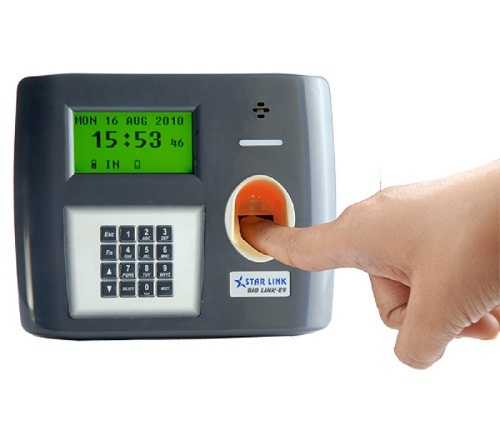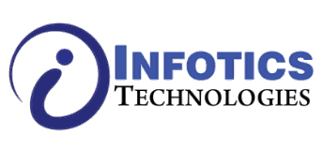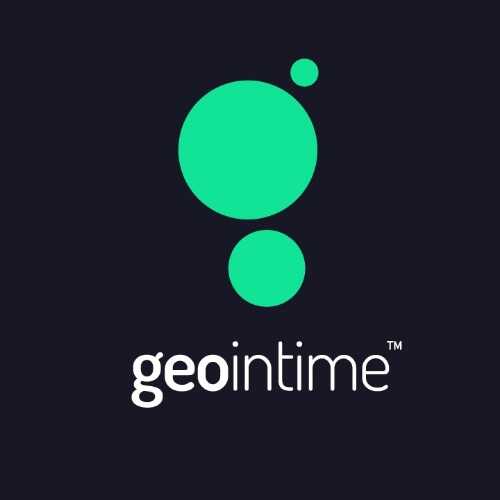What is Biometric Attendance Software?What Is Biometric Attendance Software?
Biometric Attendance Software is an innovative system that reliably records and manages attendance data by utilizing an individual's unique physiological and behavioral features. This program uses biometric technology, such as fingerprint, facial recognition, iris scanning, and voice recognition, to identify and track employees' attendance in real time.
The use of biometric data in attendance tracking provides efficiency, dependability, and security, making it the preferred option for enterprises of any size. This program allows companies to remove the manual processes and inaccuracies associated with traditional attendance methods, saving time and resources. Furthermore, biometric attendance software provides a complete picture of employee attendance, including late arrivals, early departures, and overtime, allowing for more effective monitoring and control.
Aside from attendance monitoring, this program includes leave management, shift scheduling, and payroll connection, making it a comprehensive labor management solution. The data obtained by biometric attendance software is easily connected with HR and payroll systems, removing the need for human data entry and lowering the possibility of error.
One of the most significant advantages of employing biometric attendance software is its ability to accurately collect attendance data. Unlike older methods, which can be altered, biometric data is unique to each individual and thus tamper-proof. It prevents employees from clocking in or out on behalf of others, reducing time theft and increasing employee accountability.
Additionally, biometric attendance software is user-friendly and simple to maintain. The installation process is straightforward, and the program may be quickly customized to meet the specific demands of a company. This program provides customers with a flawless and hassle-free experience with regular updates and technical support.
What Are The Recent Trends In Biometric Attendance Software?
In recent years, biometric attendance software has seen a considerable increase in acceptance across a variety of businesses. This can be ascribed to both the increased requirement for accurate and reliable employee time tracking and technological developments. To make an informed purchasing decision, buyers must stay up to date on the most recent advancements in biometric attendance software. Here are some of the current trends that you should be aware of:
1. Mobile Accessibility: With the growing popularity of smartphones and tablets, many biometric attendance software companies have created mobile apps for their systems. This enables employees to clock in and out using their mobile devices, making it more comfortable and efficient for both employees and employers.
2. Cloud-Based Solutions: Cloud technology has transformed how businesses manage their data and processes. Biometric attendance software has also switched to cloud-based solutions, which provide remote access and real-time data tracking. This trend has made it easier for firms with a distributed staff or many sites to control attendance more effectively.
3. Multi-Factor Authentication: In addition to fingerprints, many biometric attendance systems now support facial recognition, iris scanning, and voice recognition. This multi-factor authentication improves the security and accuracy of employee clock-in and clock-out, lowering the risk of fraud or buddy punching.
4. AI And Machine Learning: The addition of AI and machine learning to biometric attendance software has increased its accuracy and efficiency. These technologies can detect irregularities in an employee's attendance patterns and alert the company, thereby preventing time theft or inconsistencies.
5. Integration With Payroll And HR Systems: Many biometric attendance software packages now include the ability to integrate with payroll and HR systems. This not only simplifies the payroll procedure, but also aids in the better administration of employee data and attendance records.
6. Contactless Biometrics: Following the COVID-19 outbreak, there has been a surge in demand for contactless biometric solutions. These include touchless fingerprint scanners, facial recognition, and mobile-based attendance apps, all of which eliminate physical contact and the danger of virus transmission.
Benefits Of Using Biometric Attendance Software
Biometric attendance software provides numerous advantages for enterprises and organizations seeking to improve their attendance and time monitoring systems. Here are some of the main reasons why your firm should invest in biometric attendance software, including accuracy, efficiency, security, and cost savings.
1.Increased Accuracy: One of the most significant benefits of biometric attendance software is its ability to correctly track employee attendance data. The program uses unique physiological traits such as fingerprints, facial recognition, or iris scans to verify that each employee's time and attendance are precisely recorded, leaving no space for disputes or errors.
2.Efficient Time Tracking: Biometric attendance software eliminates the need for employees to manually clock in and out, saving them both time and effort. This leads to higher productivity because staff can concentrate on their tasks rather than wasting time with manual timekeeping systems. Furthermore, the program eliminates the need for supervisors to manually track and approve employee hours, which streamlines the process and increases productivity.
3.Enhanced Security: Traditional time tracking solutions, such as punch cards or passwords, are vulnerable to fraudulent activities like buddy punching and time theft. Biometric attendance software provides a high level of security because personal biometric information cannot be reproduced or distributed. This considerably decreases the possibility of time fraud and assures that only authorized employees may clock in and depart, improving overall security for the company.
4.Real-Time Tracking: Another significant advantage of biometric attendance software is its ability to enable real-time tracking of employee attendance. Managers and supervisors may now access up-to-date attendance data, allowing them to make educated decisions and make necessary modifications. With this kind of real-time monitoring, firms can spot patterns and trends in attendance data for optimization and decision-making.
5.Cost reductions: Implementing biometric attendance software can result in long-term cost reductions for enterprises. By eliminating manual timekeeping methods, businesses can save money on paper, ink, and other supplies. Furthermore, effective recording of employee hours helps eliminate errors and discrepancies that can result in excessive payroll costs.
6.User-Friendly Interface: Modern biometric attendance software has simple interfaces that are easy to navigate and utilize. This reduces the need for significant training and makes it available to all staff. It also reduces the possibility of human error, resulting in reliable data entry. Most biometric attendance software integrates effortlessly with other systems such as payroll, human resources, and scheduling software. This results in a more streamlined and effective workforce management process, saving time and effort for managers and supervisors.
Important Factors To Consider While Purchasing Biometric Attendance Software?
When it comes to choosing biometric attendance software, there are numerous key elements to consider to ensure that you make an informed and productive decision.
Here are some crucial aspects to consider while comparing alternative options:
1. Biometric Technology Accuracy: The major goal of biometric attendance software is to correctly track employee time and attendance. As a result, it is critical to look for a system that uses high-quality biometric technology with a track record of accuracy and dependability. This ensures that the attendance data recorded is accurate and eliminates the potential of time theft or fraud.
2. Scalability And Compatibility: As your firm expands, you may need to hire more people and integrate the software with other systems like payroll or HR. As a result, it is critical to select biometric attendance software that is both scalable and interoperable with other systems you are already using or intend to employ in the future. This will ultimately save you both time and money.
3. Integration With Existing Biometric Devices: If your firm already has biometric devices in place, it is critical to determine whether the software supports them. This will save you the effort and cost of replacing the devices while also ensuring a smooth transition to the new software.
4. User-Friendly Interface: Any software's success depends on its user-friendliness. Look for biometric attendance software that is simple to use and comprehend, especially by non-technical individuals. This reduces the time and money required for training, allowing staff to quickly adapt to the system.
5. Data Security: Time and attendance information is critical and must be safeguarded from unwanted access. To protect your data, ensure that the software includes strong security mechanisms like encryption and access limits.
6. Customization Options: Each organization has its own attendance policy and needs. As a result, it is critical to select biometric attendance software that includes customization options so that the system can be tailored to your individual requirements. This will guarantee that the software is consistent with your company's attendance standards and procedures.
7. Technical Assistance And Maintenance: Biometric attendance software, like any other software, requires periodic maintenance and technical assistance. Make sure you select a provider who provides dependable technical support and maintenance services to guarantee that the software functions well and any difficulties are fixed quickly. When choosing biometric attendance software for your organization, consider these crucial elements to make an informed decision. It is critical to thoroughly assess several possibilities and select the one that best meets your needs and budget. Remember that a dependable and efficient biometric attendance software can assist streamline your attendance operations while saving your firm time and money in the long run.
What Are The Key Features To Look For In Biometric Attendance Software?
Key Features of Biometric Attendance Software:
1. Biometric Authentication: The most critical feature to look for in biometric attendance software is the capacity to confirm employee identity using biometric technologies like fingerprint, facial recognition, or iris scanning. This allows for accurate and dependable tracking of staff attendance.
2. Automated Timekeeping: Look for software that includes an automated timekeeping capability that takes and records employee attendance data without requiring user input. This not only saves time, but also lowers the likelihood of human error.
3. Real-Time Tracking: Select software that provides real-time tracking so that you can monitor staff attendance as it occurs. This will allow you to stay informed and make necessary changes if there are any attendance difficulties.
4. Customisable Reports: The software should be capable of producing customisable reports that provide a thorough overview of employee attendance data. This allows you to examine attendance patterns, discover trends, and make informed decisions.
5. Integration With Payroll Systems: Payroll integration is an important feature to look for in biometric attendance software. This enables the proper calculation of pay based on attendance data, removing the need for manual calculations and inaccuracies.
6. User-Friendly Interface: The software's interface should be simple to use and understand. This will make it easier for you and your workers to use the software without problems.
7. Multi-Device Support: Ensure that the program is compatible with a variety of devices, including smartphones, tablets, and biometric readers. This will allow employees to log in their attendance using whichever device is most convenient for them.
8. Security And Data Protection: Because biometric data is sensitive and personal, it is critical to select software that secures and protects it. To protect your attendance data, look for features like data encryption, access restriction, and regular backups.
9. Scalability: If your business is expanding, it is critical to select software that can scale suitably. This means it should be able to handle more staff and add new features as needed.
10. Customer Assistance: Finally, assess the amount of customer assistance supplied by the software vendor. Ensure that they provide fast and efficient support in the event of any technical difficulties or inquiries. Finally, when looking for biometric attendance software, consider the aspects listed above to ensure accurate, efficient, and secure employee attendance tracking.
Why Do Businesses Need Biometric Attendance Software?
In today's fast-paced, technologically driven corporate world, precise and efficient employee attendance tracking is critical for companies of all kinds. Manual attendance monitoring techniques, such as paper timesheets or punch cards, are not only time-consuming and prone to human mistake, but they are also susceptible to fraudulent activity. Here's where biometric attendance software comes in.
This program tracks employee attendance automatically and securely by utilizing advanced biometric technologies such as fingerprints, facial recognition, or iris scanning. But why do corporations need this software? Let's look at some of the important causes. First and foremost, biometric attendance software saves time and increases efficiency. Traditional attendance tracking solutions require employees to physically enter their working hours, which can be time-consuming and onerous.
Employees can clock in and out using biometric software by just scanning their fingerprint or face, eliminating the need for manually entering data. Employees benefit from this, as do HR and administrative personnel, who would otherwise have to manually manage and calculate attendance statistics. Second, biometric attendance software reduces the possibility of buddy punching and time theft.
Manual tracking solutions allow employees to simply ask a colleague to punch in for them or modify their timesheet to indicate more hours worked. Businesses may lose income due to erroneous payroll calculations. Biometric software ensures that only registered employees may clock in and out, eliminating fraudulent activity. Furthermore, biometric attendance software delivers real-time data and insights.
This enables firms to have a better understanding of employee attendance trends and identify potential problems, such as excessive tardiness or absenteeism. This information can also be used for performance evaluations and resource planning, resulting in higher productivity and cost savings.
Moreover, biometric attendance software is extremely secure. Unlike passwords or swipe cards, biometric data is unique to each person and cannot be copied or shared. This guarantees that only authorized personnel have access to important attendance data, protecting the privacy and security of both employees and employers.
How Much Time Is Required To Implement Biometric Attendance Software?
The implementation time for biometric attendance software varies according to the size of the organization and its specific requirements. Implementing the program can take anywhere from a few weeks to a few months. This procedure has numerous parts, including installation, configuration, integration with existing systems, and employee training.
During the installation step, the software is installed on the appropriate devices, such as time clocks or mobile devices, and any necessary hardware is configured. This usually takes a few days to a week, depending on the number of devices and the difficulty of the installation process. The program is then configured to meet the specific needs of the organization.
This includes establishing labor schedules, compensation policies, and other conditions. Depending on the intricacy of the organization's requirements, this process can take a few days to a few weeks. Integration with current systems, such as payroll or HR software, is an important part of the deployment process. This guarantees that data is moved seamlessly between systems, lowering the chance of errors and saving time for HR and payroll professionals.
The time required for integration is determined by the biometric attendance software's compatibility with existing systems as well as the IT team's technical skills. After the software has been installed, configured, and integrated, employee training is required to facilitate a smooth transition to the new system. This often includes training sessions for HR, managers, and employees to teach them how to utilize the program and its capabilities.
The training might last anywhere from a few days to a few weeks, depending on the size of the workforce and their level of technology proficiency. To summarize, the implementation period for biometric attendance software can range between a few weeks and a few months, depending on a variety of circumstances.
To guarantee a smooth transition to the new system, organizations should set aside enough time for each step of the implementation process. Investing time and effort in a good implementation process can yield long-term benefits such as improved accuracy, efficiency, and cost savings.
What Is The Level Of Customization Available In Biometric Attendance Software?
Biometric attendance software provides a high level of customisation to fit the specific needs of enterprises and organizations. This customisation enables the program to be fitted to certain industries, business sizes, and staff requirements. Here are some of the main ways biometric attendance software can be customized:
1. Configurable Features: Configurable features are one of the most important ways to personalize biometric attendance software. This includes the option to configure several forms of biometric identification, such as fingerprint, facial recognition, and iris scans. Users can also opt to enable specific functionalities, such as time off monitoring or shift scheduling, based on their organization's requirements.
2. Integration With Existing Systems: Another key component of customisation is the ability to combine biometric attendance software with an organization's existing systems. This can include payroll software, human resource management systems, and even access control systems. The software's smooth integration with various systems allows it to deliver a more comprehensive solution for time and attendance tracking.
3. Customized Reports: Biometric attendance software enables customers to create customized reports to collect information about employee attendance and punctuality. These reports can be customized to contain specific information, such as overtime hours, time-off requests, or tardiness. This level of flexibility enables firms to get useful insights and make data-driven decisions that improve personnel management.
4. Multi-Language Support: For firms with staff from various backgrounds, multi-language support is an essential component of personalization. Biometric attendance software can be set up to handle several languages, making it available to all employees, independent of their native language.
5. Mobile Compatibility: In today's digital world, software must be accessible on the go. Biometric attendance software allows employees to clock in and out, request time off, and see their attendance records from their mobile devices. Overall, the level of customisation possible in biometric attendance software offers firms a flexible and customizable option for effective workforce management.
Which Industries Can Benefit The Most from Biometric Attendance Software?
In today's fast-paced business world, time is an invaluable resource. Efficiently monitoring employee attendance is critical for any industry's efficiency and profitability. Here is where biometric attendance software comes into play. This new solution streamlines attendance tracking while also providing reliable data for better staff management and payroll processing. But which industries will gain the most from biometric attendance software? Let's have a closer look.
1. Manufacturing Industry: Time is critical in the manufacturing industry since production processes have stringent timetables and deadlines. Biometric attendance software can help to streamline the attendance monitoring process by removing disparities and manual errors. As a result, projects are completed more efficiently, at lower prices, and on time.
2. Healthcare Industry: Employees must stick to rigid work schedules and be punctual. Biometric attendance software can ensure that medical personnel and employees arrive on time for their shifts, reducing delays and maintaining smooth operations. It can also measure overtime hours and patient consultation times, offering valuable insights for better customer service.
3. Retail Industry: In the retail industry, precise employee attendance tracking is critical for optimal scheduling and efficient client service. Biometric attendance software can assist eliminate buddy punching (workers clocking in for one another) while also providing real-time staff attendance statistics. This aids shift planning, reduces labor expenses, and boosts customer satisfaction.
4. Education Industry: Accurate attendance tracking is critical for student safety and class scheduling. Biometric attendance software enables schools and colleges to effortlessly track student and instructor attendance, check staff timeliness, and expedite the payment process.
5. Banking And Finance: In the banking and finance industries, biometric attendance software provides a secure and watertight technique of controlling employee attendance. It guarantees that only authorized people have access to restricted locations and monitors entry and exit times. This helps to ensure compliance with regulations while also protecting sensitive information.
Conclusion
To summarize, biometric attendance software provides a number of advantages for firms wishing to track employee time and attendance. This software uses biometric data like as fingerprints or facial recognition to record employee attendance in an accurate and secure manner, eliminating the possibility of errors and fraud.
Furthermore, features such as real-time monitoring, configurable reports, and interaction with payroll systems make it an effective tool for managing the staff. When considering acquiring biometric attendance software, you should carefully assess your individual requirements as well as the features offered by various providers.
Some important considerations are compatibility with your present system, level of security and encryption, and ease of use for both administrators and employees. It is also important to consider long-term costs, such as maintenance fees and potential renovations. Overall, biometric attendance software has shown to be a dependable and efficient solution for attendance tracking, allowing organizations to save time and money while maintaining precise payroll management.
As technology advances, we can expect more advancements in the functionality and capabilities of biometric attendance software, making it a must-have investment for any firm trying to optimize its time and attendance operations.






















